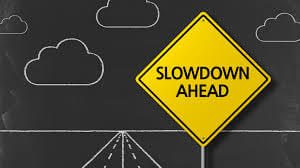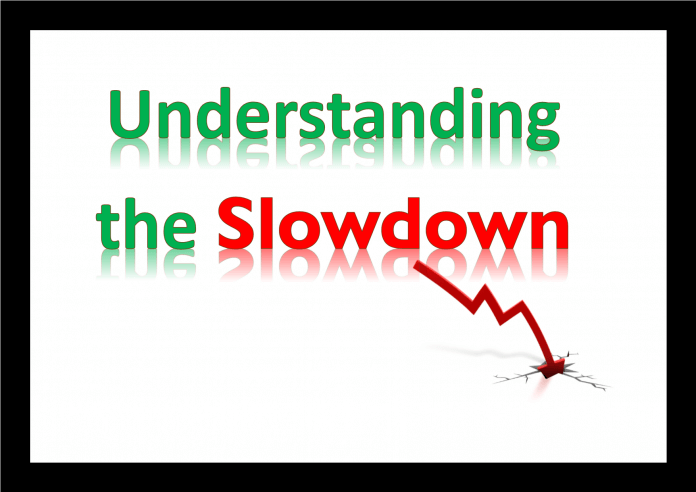Economic slowdown has forced the government to announce reduction in corporate taxes. Dr. Navodita, our Associate Editor, asks if this can bail out the economy. An exclusive analysis for Different Truths.
In yet another move to revive its sluggish economy, Indian government has significantly led to reduction in corporate taxes. This is done in a bid to boost investment in a business sector plagued by slowing demand, trade concerns and record-high unemployment. The Sensex rose by 1600 points within a day. So how is it going to affect our economy?
Corporate Tax Cuts
The unexpected tax-cuts come after the Reserve Bank of India, the central bank, announced a $24 billion payout to the central government in August and Governor Shaktikanta Das cut interest rates four times in 2019 to a nine-year low. Finance Minister Nirmala Sitharaman stated, “We want to have more investments and ‘Make-in-India’, which itself means a lot more investment, a lot more employment generation, a lot more economic activity.”
The unexpected tax-cuts come after the Reserve Bank of India, the central bank, announced a $24 billion payout to the central government in August and Governor Shaktikanta Das cut interest rates four times in 2019 to a nine-year low.
However, experts say that these tax reductions in the corporate sector do not mean much as the impact would be fairly small because a vast majority of India’s companies – the small and medium enterprises – don’t even pay corporate taxes. These types of firms, they say, make up more than 90 percent of companies, comprising the ‘backbone of India’s economy’. These may not receive relief from the new measures.
FM, however, said that economic buoyancy will itself generate enough reasons for better revenue generation. The boom in economic activity that the government expects to generate with the tax cuts should deliver greater revenue. She said the moves make India’s corporate tax rates more competitive among regional peers and aims to strengthen the country’s ‘Make-in-India’ policy.
Economic Slowdown
On the other hand, scores of private sector jobs are getting axed. Growth in car sales, retail loans and property has plummeted to multi-year lows, as the impact of the slowdown spreads across the economy
On the other hand, scores of private sector jobs are getting axed. Growth in car  sales, retail loans and property has plummeted to multi-year lows, as the impact of the slowdown spreads across the economy. The slow economy gives us reason enough to worry about the long-term prospects of a sluggish growth and economic movement. Let us look at some possible reasons for the slowdown in the economy:
sales, retail loans and property has plummeted to multi-year lows, as the impact of the slowdown spreads across the economy. The slow economy gives us reason enough to worry about the long-term prospects of a sluggish growth and economic movement. Let us look at some possible reasons for the slowdown in the economy:
Demonetisation (DeMo) that happened in November 2016, dealt a severe blow to consumption, leading to a vicious cycle of job loss and lower income, which led to further drop in demand (what economists call multiplier effect). Next shock came in the form of a reform – when GST was rolled out in July 2017. This had a knock out effect on exports growth in the year of implementation because of delay in refunds to exporters.
Just as the effects of DeMo and GST were petering out, IL & FS crisis triggered the Non-Banking Financial Companies’ (NBFC) credit crunch in 2018. By 2018-end, weakening global trade and GDP growth, led by US-China tariff wars, had caught up, enlarging the effect.
Just as the effects of DeMo and GST were petering out, IL & FS crisis triggered the Non-Banking Financial Companies’ (NBFC) credit crunch in 2018. By 2018-end, weakening global trade and GDP growth, led by US-China tariff wars, had caught up, enlarging the effect. There are lot other factors that have led to a slow economy, and GDP is an important indicator which even pushed the Indian economy further down on the world ranking.
Our country has been pushed to the seventh place in the global GDP rankings in 2018 with the UK and France forging ahead to the fifth and sixth spots respectively, data compiled by the World Bank showed. In 2017, India had emerged as the sixth largest economy, while France was pushed to the seventh largest one in the global GDP league.
Economists said India taking the seventh-largest global economy tag in 2018 was largely due to the currency fluctuations and slowdown in growth.
US remains the top economy with a GDP of $20.5 trillion in 2018. China was the second largest economy with $13.6 trillion, while Japan took the third place with $5 trillion. India’s GDP was at $2.7 trillion in 2018, while UK and France were at $2.8 trillion. Economists said India taking the seventh-largest global economy tag in 2018 was largely due to the currency fluctuations and slowdown in growth.
What Lies Ahead?
Some see the present tax cut simply as a concession to corporate houses rather than as a structural reform that could boost the wider economy. They believe that the current economic slowdown is due to the problem of insufficient demand, which cannot be addressed just through tax cuts and instead advocate greater government spending to boost the economy. Others, however, argue that lackluster demand faced by sectors like automobiles is merely a symptom of supply-side shocks such as the goods and services tax that have affected various businesses and caused job losses. If so, tax cuts and other supply-side reforms can indeed help the economy recover from its slump. However, the government will also need to simultaneously enact along with these tax cuts other structural reforms that reduce entry barriers in the economy and make the marketplace more competitive. The government could, for instance, extend the tax cuts to smaller businesses. The benefits of the present tax cut will also depend on whether the government sticks to its promises in the long run. Investor confidence in the past, it is worth noting, has been affected by retrospective changes to the law made by governments in the past.
We have to wait and watch how this move fares in the long run. The government may just have to make a few more structural reforms to boost the economy.
Photos from the Internet






 By
By
 By
By
 By
By
 By
By